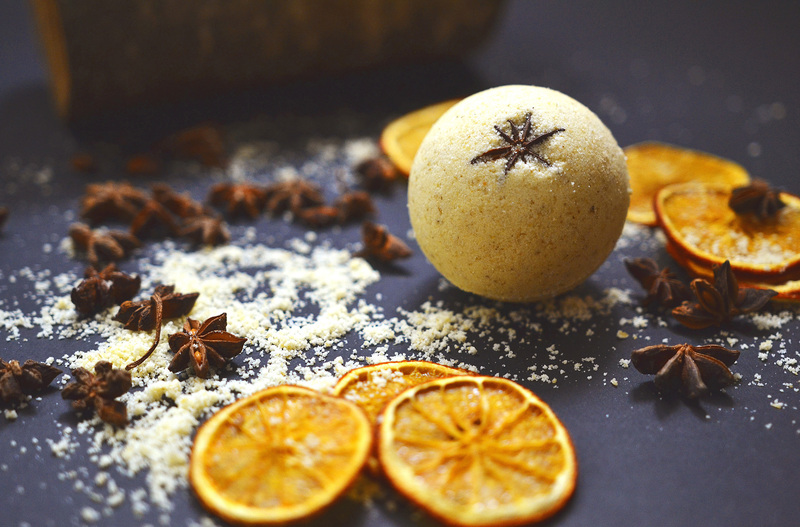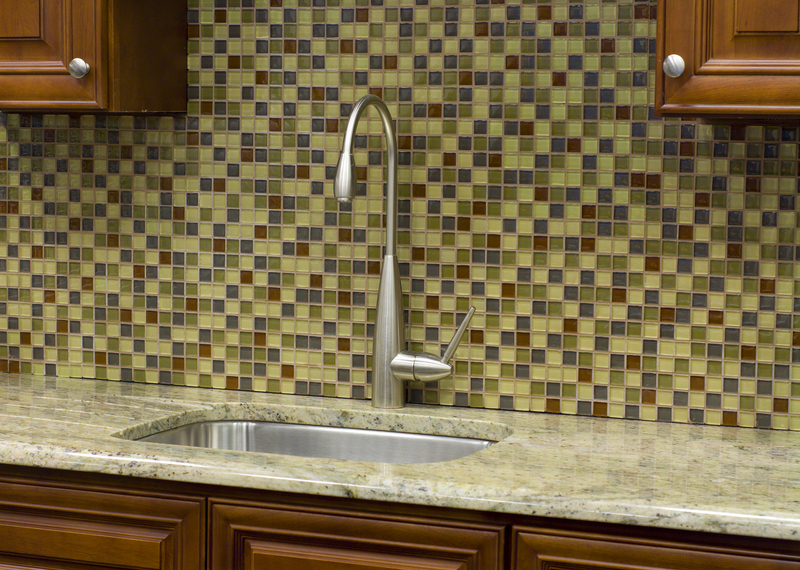Ultimate Guide to High-Efficiency Window Cleaning
Posted on 30/05/2025
Ultimate Guide to High-Efficiency Window Cleaning
High-efficiency window cleaning is not just about achieving spotless glass, but also about saving time, resources, and energy while extending the life of your windows. In this comprehensive guide, we'll cover everything you need to know about efficient window washing, including practical tips, recommended methods, eco-friendly solutions, tools, and expert advice.
Why High-Efficiency Window Cleaning Matters
If you're still using paper towels and spray cleaner, it's time to upgrade your approach. High-efficiency window cleaning offers many benefits:
- Longer-lasting clean: Professional techniques minimize streaks and delay re-soiling.
- Eco-friendly: Reducing waste and using fewer chemicals protect your home and the environment.
- Time saving: Modern tools and methods get the job done in less time and with less effort.
- Safe and healthy: Cleaner windows improve natural lighting and air quality indoors.
Whether you're a homeowner, a commercial building manager, or a cleaning professional, adopting efficient window cleaning methods ensures pristine results with maximum productivity.

Understanding the Window Cleaning Process
The Fundamentals of High-Efficiency Window Washing
Efficient window cleaning techniques rely on the right mix of preparation, equipment, and cleaning solutions. The process involves more than just washing the glass--it's about tackling frames, tracks, screens, and surroundings for a complete, streak-free finish.
Here's a simplified overview before we dive deep into each aspect:
- Remove dust and debris from frames and screens.
- Apply the right cleaning solution to the glass.
- Use professional tools for washing and drying.
- Polish and inspect for a flawless finish.
Essential Tools for Efficient Window Cleaning
Must-Have Equipment for Professional Results
- Microfiber cloths: Ideal for removing dust, dirt, and polishing.
- Squeegees: The secret behind streak-free results; look for ergonomic designs.
- Scrubbers: Use for tough grime and sticky residues.
- Telescopic poles: Reach high or difficult windows safely without ladders.
- Bucket or cleaning caddy: Keeps solution and tools at hand.
- Eco-friendly cleaning solution: Commercial or homemade formulas can both be effective.
- Protective gloves: Protect your hands from cleaning chemicals.
Pro Tips:
- Invest in a high-quality squeegee; replace blades regularly for best performance.
- Use lint-free towels to prevent fibers from sticking to glass.
- For upper exterior windows, consider a water-fed pole system with purified water for a spot-free dry.
Best Cleaning Solutions for High-Efficiency Window Washing
Homemade and Commercial Formulas
The right solution is key for streak-free, efficient window cleaning. Avoid products that leave residue.
- DIY Vinegar Solution: Mix one part white vinegar with two parts water. Excellent for non-tinted glass.
- Dish Soap Solution: Add a few drops of mild dish soap to a bucket of warm water. Effective for greasy or extremely dirty windows.
- Commercial High-Efficiency Glass Cleaners: Look for non-toxic, biodegradable options for both safety and effectiveness.
Do not use ammonia-based cleaners on tinted or specialty windows--they can damage the film and void warranties.
Step-by-Step High-Efficiency Window Cleaning Guide
Preparation Stage
- Remove dust and cobwebs: Use a soft brush or dry microfiber cloth on frames and sills.
- Take out screens: If possible, remove screens and vacuum gently to get rid of dust and pollen.
- Move obstacles: Clear the area around the window for safe, unrestricted access.
Washing and Rinsing
- Wet the glass with your cleaning solution using a spray bottle or applicator.
- Agitate dirt: Use a scrubber or sponge to gently dislodge grime; for tough spots, let the solution sit for 2-3 minutes.
- Squeegee off:
- Start at the top left corner.
- Pull the squeegee horizontally or vertically in one smooth motion.
- Wipe the blade with a lint-free cloth between strokes.
- Detail edges: Use a dry microfiber cloth to clean up any drips or spots from window frames and ledges.
Final Touches
- Replace and secure screens.
- Wipe window tracks: Use an old toothbrush or cotton swab for hard-to-reach corners.
- Inspect in daylight: Check for missed spots or streaks, and re-polish if necessary.
Advanced Techniques for Efficient Large-Scale Window Cleaning
Commercial High-Efficiency Cleaning Tactics
- Water-fed pole systems: Use purified (deionized) water to clean multi-story windows quickly, with no soap residue and minimal drying required.
- Two-bucket method: One bucket for clean solution, one for rinsing; keeps tools and solution cleaner, reducing streaks.
- Automated window cleaning devices: Robot cleaners can save time on large glass surfaces, but always check for compatibility with your window type.
- Teamwork: In commercial settings, assign specific roles--washing, squeegeeing, detailing--for maximum efficiency.
Eco-Friendly Approaches to High-Efficiency Window Washing
Sustainable Solutions for a Cleaner Planet
- Use biodegradable cleaning agents and avoid harsh chemicals.
- Save water by using spray bottles instead of running hoses.
- Choose reusable microfiber and cloths over disposable paper towels.
- Compost plant-based wipes or sponges where possible.
- Collect and recycle wastewater when cleaning exterior windows near gardens or drains.
Did you know? Professional window washers often use deionized water systems, which clean without chemicals--the pure water attracts and dissolves dirt, leaving no spots or build-up.
Tips and Tricks for Faster, Better Window Cleaning Results
- Clean on a cloudy day: Direct sunlight can evaporate cleaning solutions too quickly, causing streaks.
- Work top to bottom: Prevent dirty water from dripping onto areas you've already cleaned.
- Check the weather: Avoid washing exterior windows on windy or rainy days; wait for dry, mild conditions.
- Don't forget the details: Clean window tracks, sills, and frames for a professional look.
- Mark your calendar: Schedule cleaning at least twice a year for homes, quarterly for commercial buildings.
Common Window Cleaning Mistakes to Avoid
- Using paper towels: They leave lint and can scratch glass.
- Overusing detergent: Can cause residue and streaking.
- Ignoring screens: Dirty screens transfer more dust to your windows.
- Skipping the rinse: Leftover solution can attract new dirt faster.
- Cleaning only one side: Both interior and exterior need attention for real clarity.
High-Efficiency Window Cleaning for Specialty Glass
Care for Tinted and Treated Glass
For tinted, frosted, or specialty glass, use:
- A void abrasive tools or scrubbers which may scratch or damage the surface.
- Mild, ammonia-free cleaners to avoid degrading window films.
- Soft microfiber cloths for polishing and drying.
Tip: Always follow the manufacturer's care instructions for high-performance glazing or insulated glass units (IGUs).
Frequently Asked Questions about Efficient Window Cleaning
How often should you clean your windows?
Residential windows should be cleaned at least twice a year. For homes near busy streets, sea spray, or pollen, consider cleaning every 3-4 months. Commercial buildings often benefit from monthly cleaning for best appearance and hygiene.
What's the fastest way to clean windows?
For most homes, a bucket of water with a drop of dish soap, a microfiber scrubber, and a sharp squeegee will yield the fastest and most effective results. For large or high windows, a water-fed pole with pure water can cover a lot of surface without ladders.
Are commercial cleaners better than homemade?
Both can be highly effective. Many commercial cleaners are formulated for high-efficiency glass cleaning and offer added benefits like anti-streak and anti-static properties. However, DIY solutions using vinegar and water are inexpensive, safe, and popular for regular maintenance.
Is it necessary to clean window screens?
Absolutely! Dirty screens can transfer grime to clean windows and block natural light. Wash screens gently with soapy water, rinse thoroughly, and let them air dry before replacing.
High-Efficiency Window Cleaning Safety Tips
Safe Practices for Homeowners and Professionals
- Use stable ladders on level ground if you can't reach with a pole.
- Wear gloves to protect skin from cleaning agents and sharp window edges.
- Never lean out far from windows--use extended tools instead.
- Avoid cleaning windows during storms or high winds, especially when using ladders or poles.
- Store cleaning chemicals securely and out of reach of children and pets.

Maintaining Results: Keeping Your Windows Clean for Longer
How to Extend the Shine
- Apply a rain-repellent glass treatment to exterior panes to minimize spotting between cleans.
- Dust interior window sills frequently to avoid grime buildup.
- Trim back trees or plants that might splash mud or sap onto your windows.
- Encourage everyone at home or in the office to keep hands (and paws!) off glass surfaces.
- Address leaks or condensation quickly to prevent mold and water marks.
Conclusion: Shine On with High-Efficiency Window Cleaning
High-efficiency window cleaning doesn't just mean faster--it's about smarter, safer, and cleaner results that last. By investing in the right tools, using eco-friendly practices, and mastering the best techniques, you'll transform your window cleaning experience and enjoy the benefits of sparkling glass and brighter interiors.
Whether you're a DIY enthusiast or a commercial cleaning pro, efficient window washing is within your reach. Follow this Ultimate Guide to High-Efficiency Window Cleaning and take your results--and your view--to the next level!
For more expert tips, eco-friendly product reviews, and in-depth cleaning guides, subscribe to our newsletter and keep your whole home shining all year round.





